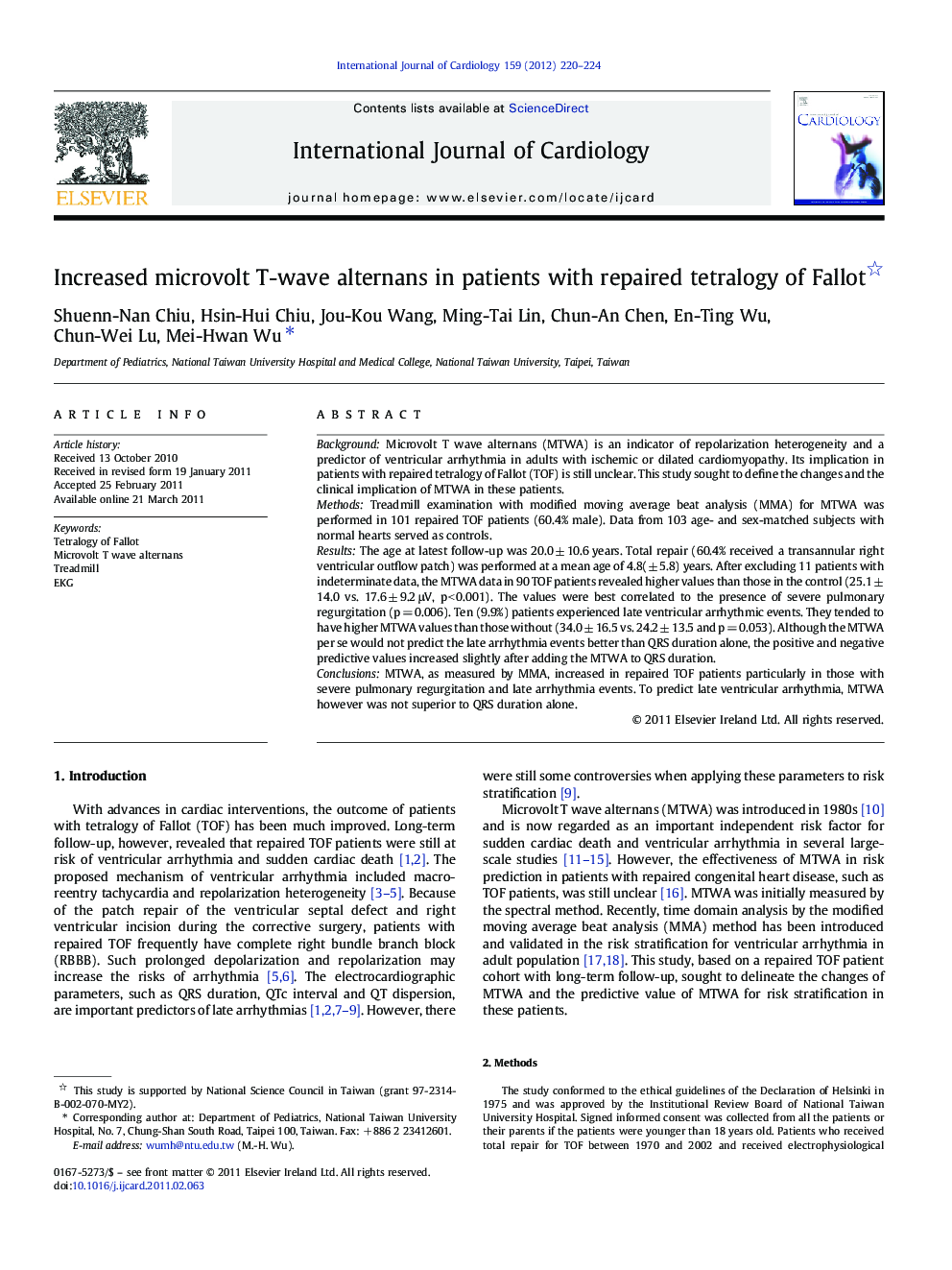| Article ID | Journal | Published Year | Pages | File Type |
|---|---|---|---|---|
| 2929649 | International Journal of Cardiology | 2012 | 5 Pages |
BackgroundMicrovolt T wave alternans (MTWA) is an indicator of repolarization heterogeneity and a predictor of ventricular arrhythmia in adults with ischemic or dilated cardiomyopathy. Its implication in patients with repaired tetralogy of Fallot (TOF) is still unclear. This study sought to define the changes and the clinical implication of MTWA in these patients.MethodsTreadmill examination with modified moving average beat analysis (MMA) for MTWA was performed in 101 repaired TOF patients (60.4% male). Data from 103 age- and sex-matched subjects with normal hearts served as controls.ResultsThe age at latest follow-up was 20.0 ± 10.6 years. Total repair (60.4% received a transannular right ventricular outflow patch) was performed at a mean age of 4.8(± 5.8) years. After excluding 11 patients with indeterminate data, the MTWA data in 90 TOF patients revealed higher values than those in the control (25.1 ± 14.0 vs. 17.6 ± 9.2 μV, p < 0.001). The values were best correlated to the presence of severe pulmonary regurgitation (p = 0.006). Ten (9.9%) patients experienced late ventricular arrhythmic events. They tended to have higher MTWA values than those without (34.0 ± 16.5 vs. 24.2 ± 13.5 and p = 0.053). Although the MTWA per se would not predict the late arrhythmia events better than QRS duration alone, the positive and negative predictive values increased slightly after adding the MTWA to QRS duration.ConclusionsMTWA, as measured by MMA, increased in repaired TOF patients particularly in those with severe pulmonary regurgitation and late arrhythmia events. To predict late ventricular arrhythmia, MTWA however was not superior to QRS duration alone.
